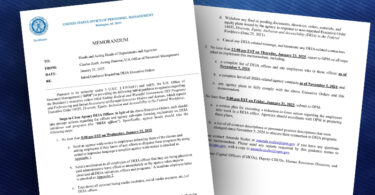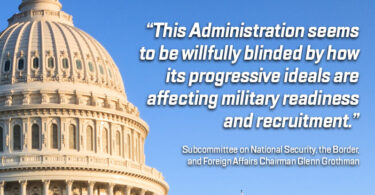By R. Lawrence Purdy, USNA ’68
It is all but impossible to make the case that there are “potentially distinct interests” that would justify the use of race in admissions to our nation’s service academies.
-o-
In 1954 and 1955, the United States Supreme Court reached a unanimous decision in several consolidated cases, “declaring the fundamental principle that racial discrimination in public education is unconstitutional . . .” (Brown v. Bd. of Educ., 347 U.S. 483 (1954); and Brown v. Bd. of Educ., 349 U.S. 294, 298 (1955) (“Brown II”)).
In what is among the most important decisions ever reached by our nation’s highest court, the justices countenanced no exceptions: “All provisions of federal, state, or local law requiring or permitting such discrimination must yield to this principle.”1
Fast forward six years after Brown II. The phrase “affirmative action” first appears in an executive order issued by a freshly inaugurated president. The context in which the phrase was invoked was not in the least ambiguous:
WHEREAS discrimination because of race, creed, color, or national origin is contrary to the Constitutional principles and policies of the United States; . . . the [federal] contractor will take affirmative action to ensure that applicants are employed, and that employees are treated during employment, without regard to their race, creed, color, or national origin. (Presidential Executive Order 10925, signed by President John F. Kennedy on March 6, 1961) (emphasis added).
It was a clear directive that race be removed—not added—as a factor in federal government employment.
Notwithstanding the convergent intentions of Brown and President Kennedy’s executive order, the phrase “affirmative action” became politically redefined over several succeeding presidential administrations by those who—admittedly, at times in good faith—practiced a form of raw racial politics.
In 2003, over forty years after the phrase made its first appearance, this group included five justices sitting on our nation’s highest court.
Tragically, Justice Sandra Day O’Connor’s opinion in Grutter v. Bollinger, 539 U.S.306 (2003), entirely ignored (and effectively overruled) Brown’s fundamental principle.
With O’Connor’s blessing, “affirmative action” became synonymous with programs that practiced blatant racial discrimination against thousands of innocent applicants seeking admission to our nation’s most elite educational institutions.
On June 29, 2023, our Supreme Court signaled that this discrimination must end. And while it nowhere explicitly heralds a return to Brown’s fundamental principle, it came close:
Eliminating racial discrimination means eliminating all of it. Accordingly, the Court has held that the Equal Protection Clause applies “without regard to any differences of race, of color, or of nationality”— it is “universal in [its] application” [cite omitted] . . . [f]or “[t]he guarantee of equal protection cannot mean one thing when applied to one individual and something else when applied to a person of another color.” Regents of Univ. of Cal. v. Bakke, 438 U. S. 265, 289–290.
Students For Fair Admissions, Inc. v President and Fellows of Harvard College (“SFFA”), 600 U.S. ___ (Slip Opinion at 15) (emphasis added).
However, embedded within the majority opinion is a brief footnote (footnote 4). It touches on the question—left unanswered by the Court—of whether the prohibition on the use of race in admissions applies to our nation’s service academies. . . . . (read the rest on Minding the Campus)
–
Mr. Purdy is a 1968 graduate of the United States Naval Academy and a veteran of the Vietnam War. As a lawyer in private practice, he was a member of the pro bono trial and appellate team that litigated the University of Michigan race-preference admissions lawsuits on behalf of the plaintiffs Barbara Grutter and Jennifer Gratz.








Leave a Comment